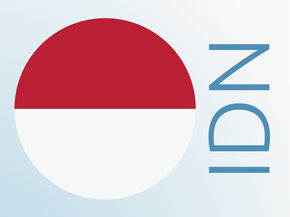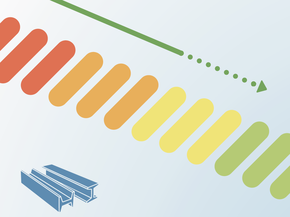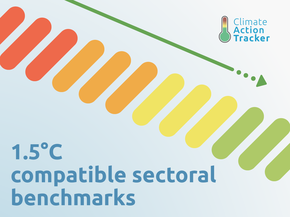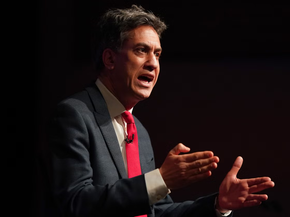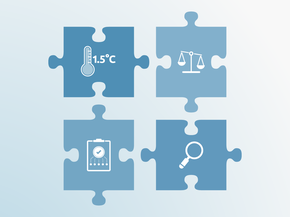Current Policy Projections
Economy-wide
Peru’s emissions, excluding LULUCF, have increased by 84% from about 52 MtCO2e in 1990 to 96 MtCO2e in 2014 (Ministry of Environment of Peru, 2020a). According to our calculations, national emissions will experience a 14 - 16% drop in 2020 compared to 2019 levels as consequence of the pandemic, which will then lead to emission levels of between 110 - 113 MtCO2e, excl. LULUCF, by 2030 (109 - 115% above 1990 levels). Under current policy projections, Peru will now overachieve both its conditional and unconditional 2030 targets.
Other relevant developments include the approval of the regulation of the framework law on climate change at the end of 2019, which makes Peru’s NDC pledge legally binding (SINIA, 2020). In July 2020, the government established a high-level climate change committee, including members of 13 ministries, which will inform the setting of climate related targets and report to the UNFCCC on progress (Ministry of Environment of Peru, 2020b).
In October, Peru and Switzerland signed a carbon credit agreement where Switzerland will finance emission reduction projects that are designed to contribute to sustainable development in Peru while the emissions reductions would count towards the Swiss NDC (Climate Home News, 2020). In order to ensure environmental integrity, both Peru and Switzerland would have to put in place robust accounting systems so that the reductions are only counted once. The rules and oversight provisions for such transfers have not yet been agreed under Article 6 of the Paris Agreement. This poses a major risk for Peru in the long term, as achieving further mitigation reductions in the future (as needed under the Paris Agreement) will become much harder.
Peru has been particularly hard hit by the pandemic. In March 2020, the government established a very strict lockdown, lasting for more than four months. Still, the country’s per capita fatality rate was one of the highest in the world and, with Brazil, had the highest infection rate in South America (KfW Development Bank, 2020). The pandemic led to one of Peru’s worst economic crises, with a 3.5% drop in GDP during the first quarter of the year, followed by a devastating 30.2% drop in the second quarter of 2020 (Bloomberg News, 2020). Overall, Peru’s GDP projections expect an annual drop of 12.0% - 13.9% in 2020 due to COVID-19. In response to the health emergency, the government introduced several measures, mostly emergency financial bailouts, to support vulnerable households and extended tax repayments for micro, small and medium-sized enterprises.
Government representatives have in several instances referred to a ‘building back better’ approach, taking into account sustainability and responding to climate change. In this context, Peru recently received the largest individual loan that the KfW Development Bank has ever granted to a Peruvian institution (EUR 250 million). This loan will have a duration of 15 years and a five-year grace period. It is meant to help small businesses and their employees to survive the current economic crisis and, once the economy begins to recover, the funds will be used to promote climate-friendly investments (COFIDE, 2020; KfW Development Bank, 2020).
At the time of publication of this report, Peru had just been pushed into -new- political uncertainty after its Congress voted to remove President Vizcarra in an impeachment trial. On Monday, November 16, the Congress elected Francisco Sagasti as new interim president, Peru’s third president in a week, until national elections are held in April 2021. The local currency hit an 18-year low that week, threatening the country’s recovery from the pandemic as well as bringing further uncertainty to its plans to implement further, more ambitious climate policies.
Energy supply
The energy sector is the second largest source of emissions in the country, after LULUCF emissions (Ministry of Environment of Peru, 2020a). Policies that aim to mitigate these emissions include the policy for ‘promotion of investment for the generation of electricity from renewable energy’, which builds on the National Strategy on Climate Change and prioritises renewable energy generation as a matter of national interest and public necessity. Since 2009, four renewable energy auctions have contributed towards achieving this target (El Comercio, 2017).
Renewables accounted for 25% of Peru’s total primary energy supply in 2018. Over 50% of this share came from biofuels and just over 40% comes from hydro; wind and solar contribute only 4% to the overall share of renewables. Peru is lagging in its efforts of achieving 40% renewable energy by 2021, as announced in its Copenhagen pledge (IEA, 2020).
Peru has a law to promote energy efficiency (Law N°27345) which encourages a culture of improving energy efficiency, in coordination with other public institutions and the private sector. It also defines sectoral programmes for the efficient use of energy (Government of Peru, 2000).
The law to promote a market for biofuels (Law N°28054) establishes the general framework to promote the development of biofuels with the aim to diversify the fuel market. The current fuel mix quotas (5% for biodiesel and 7.8% for ethanol) are already considered in the BAU scenario (Government of Peru, 2015a)
Transport
Transport emissions represent 34% of Peru’s energy-related emissions, the largest contributor to the sector’s emissions (Ministry of Environment of Peru, 2020a). To help mitigate the rapid increase in transport emissions, Peru has implemented a range of policies over the years, with some new developments in the context of the pandemic:
- In May 2020, the government approved a decree that sets tax incentives to promote the acquisition of hybrid or electric vehicles by an accelerated depreciation of up to 50% per year (Government of Peru, 2020; PLATFORM for REDESIGN, 2020);
- In the same month, the government approved by law the National Programme for Sustainable Urban Transport, which provides cities with support for cleaning and disinfection of public transport vehicles as well as for developing cycling infrastructure, referred to as low-emissions and low-risk mode of transport (Government of Peru, 2019);
- Full implementation of phase I of the Lima Metro Network (Line 1) and a second phase (Line 2) expected to start running by July 2021 (Andina, 2020);
- COFIGAS Programme, which supports the conversion of vehicles to run on natural gas, which estimates that about 274,000 vehicles were converted to gas since the start of the program until end of 2018 (COFIDE, 2019);
- A emissions standards Decree (updated in 2017) which establishes maximum permissible limits of atmospheric emissions for vehicles and mandates that as of 1 April 2018, vehicle emission standards will be Euro 4/IV, Tier 2 and EPA 2007 (Government of Peru, 2017; UNEP, 2017).
Buildings
In 2015, Peru approved a Sustainable Construction Code to improve technical criteria for the design and construction of public and private buildings (Supreme Decree no. 015-2015-VIVIENDA). In 2017, the government also introduced energy efficiency labels for household appliances (Supreme Decree no. 009-2017-EM).
Forestry
Forests cover over two thirds of the national territory, Peru hosts about 740,000 square kilometres of forests, including the largest area of the Amazon rainforest after Brazil (World Bank, 2015). Land use and forestry emissions are the main source of emissions in Peru, with a share of almost 45% (Ministry of Environment of Peru, 2020a). In August 2019, concerns about deforestation in the Amazon increased significantly with the proliferation of fires in the Amazon rainforest (Phys News, 2019). As response, seven South American countries, including Peru, signed a pact setting up a disaster response network; satellite monitoring; and agreeing to work on reforestation (BBC News, 2019).
Although the government has been reporting lower annual deforestation rates since 2017, this remains a critical problem in Peru. During COP25, the Environment Minister reported significantly lower deforestation rates in three regions of the country, but increasing rates in other four regions (Ministry of Environment of Peru, 2019). The current decreasing trend in deforestation was attributed to the work done under the National Forest Conservation Program, which was recently extended for ten more years and has set the target of protecting 10 million forest hectares by 2030. This would reduce current deforestation rates by 30% (Ministry of Environment of Peru, 2020d).
Under current policies projections for the LULUCF sector, emissions from Peruvian deforestation are projected to increase by 82–84% between 2012 and 2030, a growth rate not seen before in Peru’s history (Ministerio del Ambiente del Perú, 2016). We note that this estimate is significantly higher than previous estimates by the Center for International Forestry Research - CIFOR (CIFOR, 2014). This would be in extreme contradiction with Peru’s Copenhagen pledge of reducing LULUCF emissions to zero by 2021. As world LULUCF emissions would need to decrease by 95% compared to 2010, by 2030 to fall in the Paris Agreement emissions pathway, Peru needs to address—and prevent—this significant projected increase (Climate Action Tracker, 2016).
Further analysis
Latest publications
Stay informed
Subscribe to our newsletter

